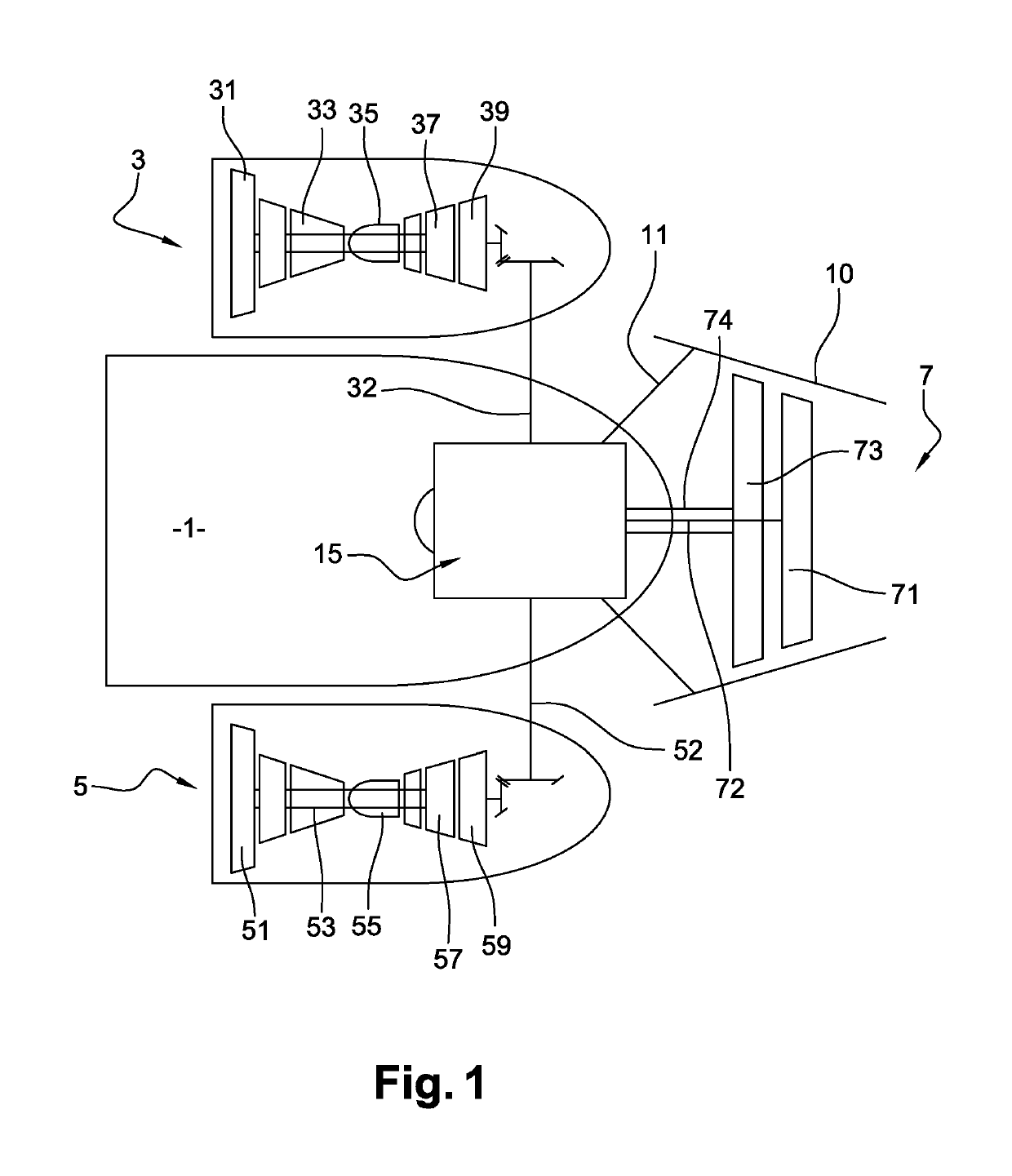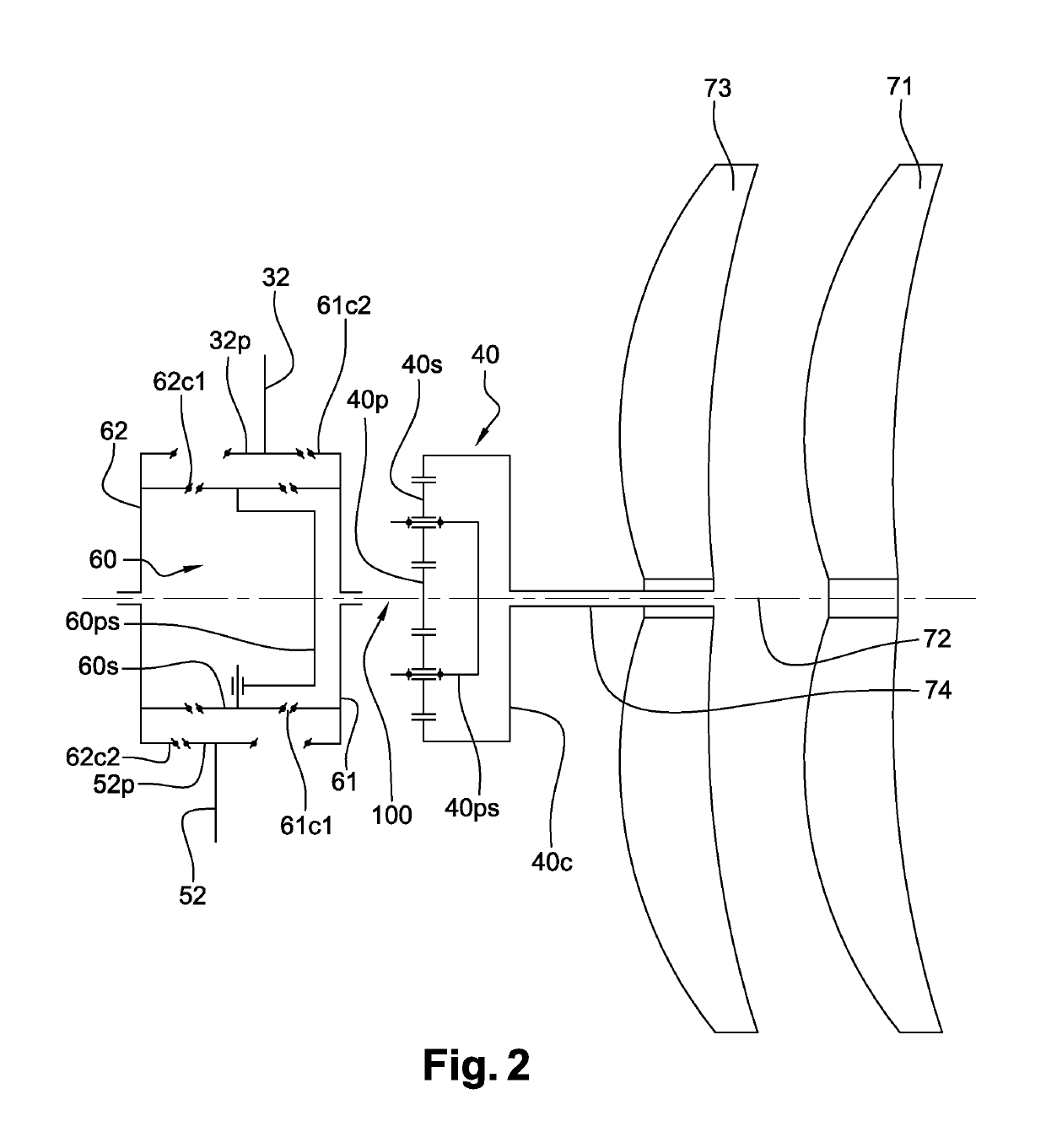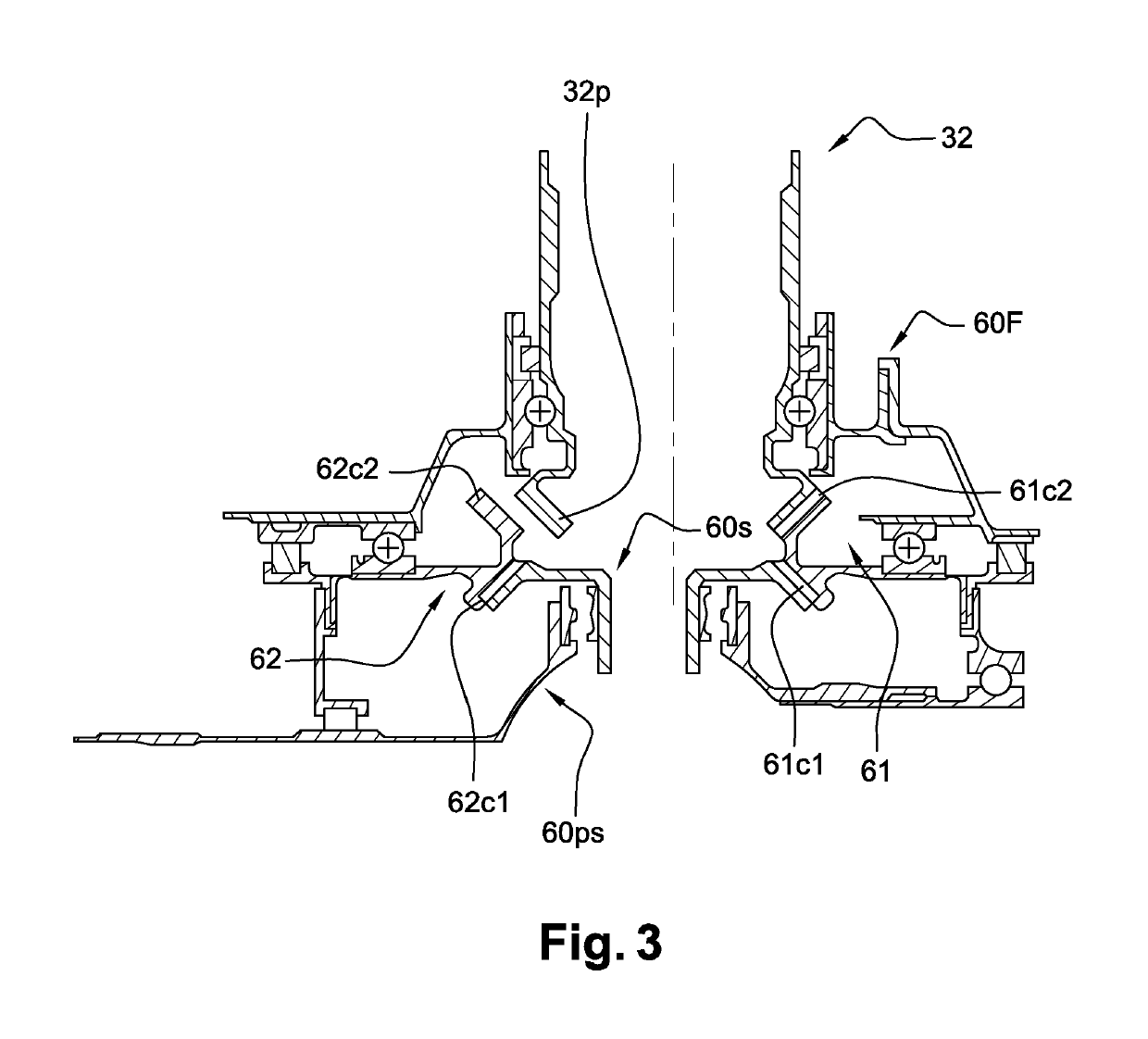Aircraft comprising a propulsion assembly including a pair of propellers at the rear of the fuselage
a propulsion assembly and fuselage technology, applied in the field of aeronautical, can solve the problems of total loss of thrust, total obstruction of hot inner flow, and inability to generate thrust, so as to maximise propulsion efficiency and maximize thermal efficiency
- Summary
- Abstract
- Description
- Claims
- Application Information
AI Technical Summary
Benefits of technology
Problems solved by technology
Method used
Image
Examples
Embodiment Construction
[0028]The propulsion assembly is mounted at the rear of the aircraft, of which the rear part of the fuselage 1 has been shown. The two gas motors 3 and 5 are mounted on this fuselage having a longitudinal axis X by means of pylons which are arranged appropriately but are not shown. These two pylons are positioned in such a way as to set aside sufficient space between the wall of the fuselage 1 and the air input duct of each of the motors 3 and 5, thus preventing the air of the boundary layer formed along the fuselage from being directed towards the air input ducts. This air flows along the fuselage towards the rear.
[0029]The motors are turbojets in the example illustrated here. They thus comprise a low-pressure body formed of a rotor with a compressor 31; 51 and a turbine 39; 59, and a high-pressure body formed of a rotor with a compressor 33; 53 and a turbine 37; 57. The compressors power a combustion chamber 35; 55, the gas products of which drive the high-pressure and low-pressur...
PUM
 Login to View More
Login to View More Abstract
Description
Claims
Application Information
 Login to View More
Login to View More - R&D
- Intellectual Property
- Life Sciences
- Materials
- Tech Scout
- Unparalleled Data Quality
- Higher Quality Content
- 60% Fewer Hallucinations
Browse by: Latest US Patents, China's latest patents, Technical Efficacy Thesaurus, Application Domain, Technology Topic, Popular Technical Reports.
© 2025 PatSnap. All rights reserved.Legal|Privacy policy|Modern Slavery Act Transparency Statement|Sitemap|About US| Contact US: help@patsnap.com



